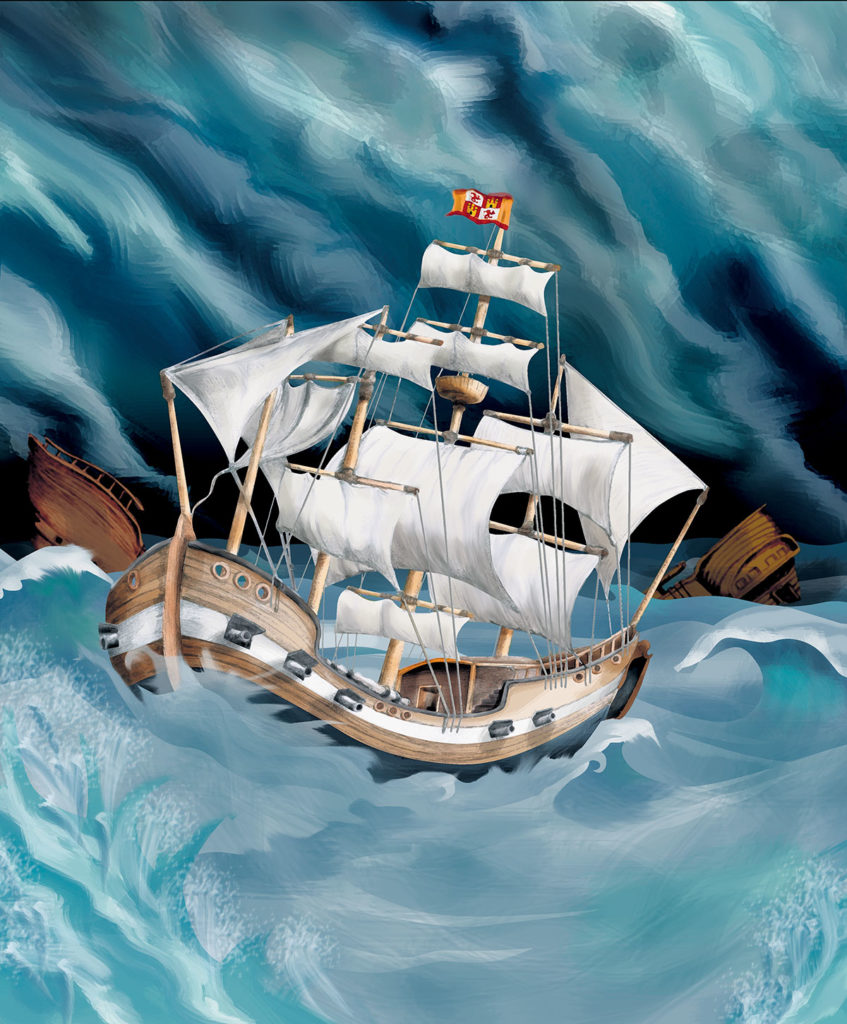Sea keeps doomed fleet’s secrets

BY JULIE TARASOVIC
With all the latest technology in modern day maritime engineering, it’s difficult to imagine what it was like for crew and passengers sailing halfway around the world in 1715 onboard wooden ships bound for the New World. A combination of excitement, the unknown, and danger drove these people of the 18th century on a voyage of possibility and peril.
Three hundred years later, we are still learning about the ill-fated Spanish Plate Fleet that sank off the east coast of Florida because of a horrific July hurricane. Nearly half of the 2,500 lives onboard the 11 ships were lost, as well as several hundred millions of dollars in treasure. Only one ship managed to escape that deadly morning, the French vessel Grifon, which the Spanish had forced to sail with the fleet to keep their movements secret. But even the survival of that ship is debated by historians. Pirates and buccaneers were prevalent in those days, tracking ships they knew were laden with treasures.
Spain sent two fleets annually to the New World, the Galeones de Tierra Firme and the New Spain Flota. The first sailed to Colombia where it picked up emeralds, gold and pearls and then to Peru for silver. The second fleet sailed to Veracruz, Mexico, for its silver, cochineal and indigo dyes as well as goods from the Orient. The two fleets met up in Havana, Cuba, and set sail for home across the Atlantic. The voyage was to be routine — sail up the Gulf Stream to Florida’s east coast – the longer route gave navigators landmarks to mark the voyage by — and catch the trade winds halfway up that would take them to Spain. There, King Philip V was awaiting his treasure. After giving in to Philip’s proposal for marriage, Elizabeth Farnesse, duchess of Parma, from the hurricane drove the ships shoreward, breaking up on the reefs and crashing into shore anywhere from present-day Cape Canaveral to Jensen Beach. The wreck was to be the greatest find of sunken treasure since 1687, when William Phips discovered a million dollars in silver bars and coin from a galleon that went down in 1643 off the coast of Hispaniola.
